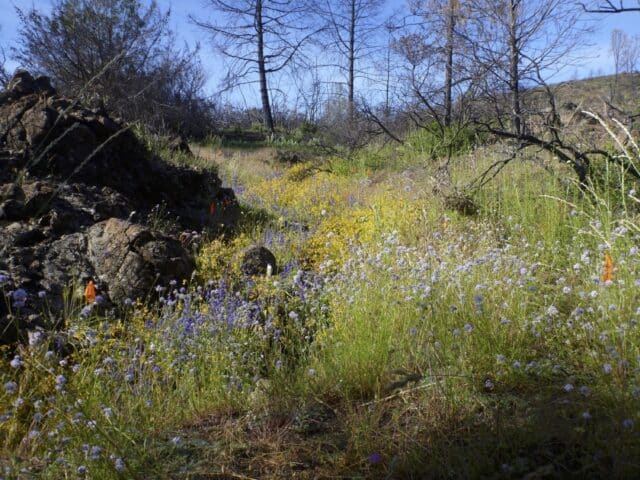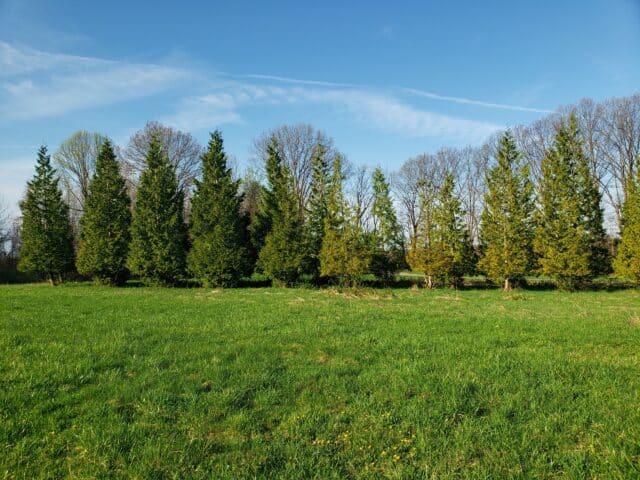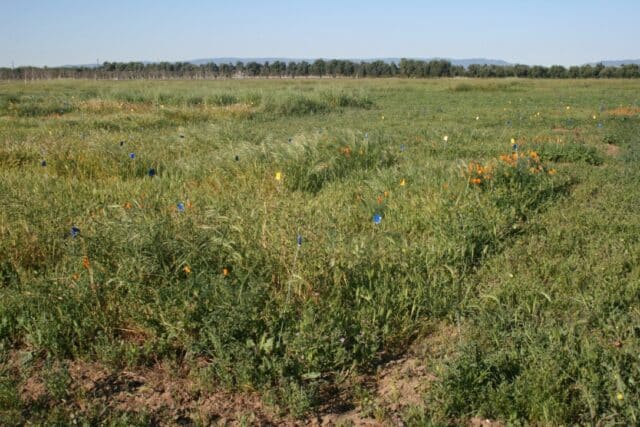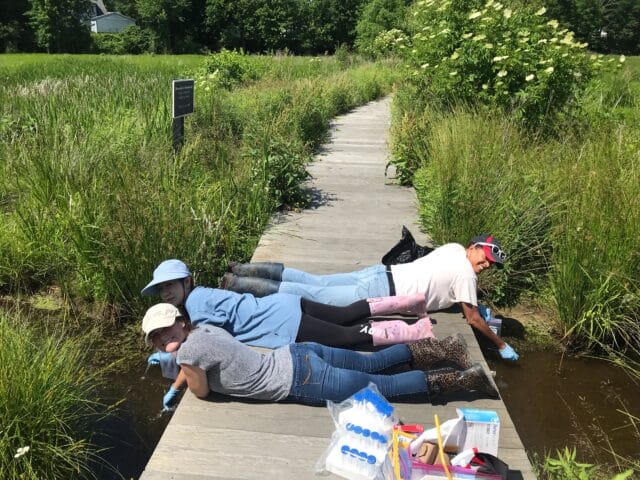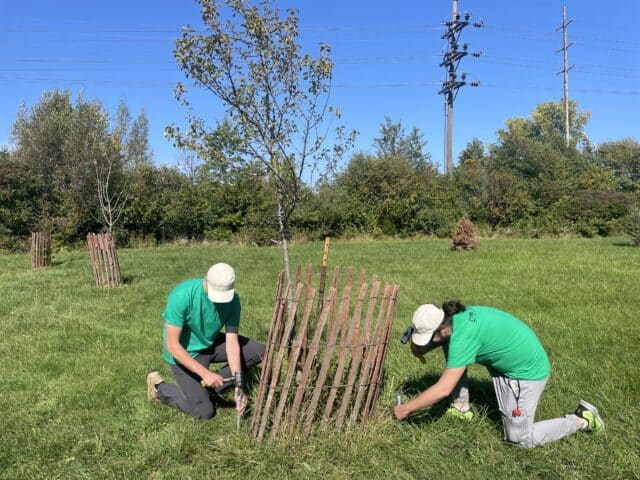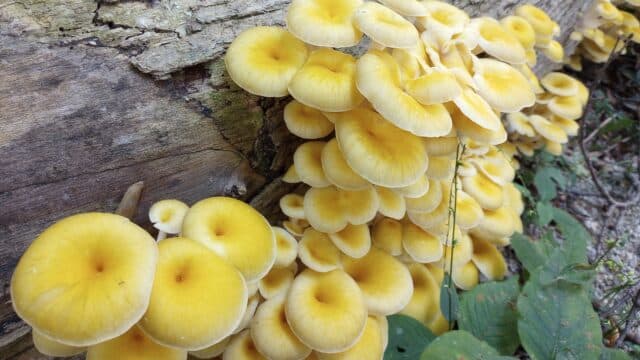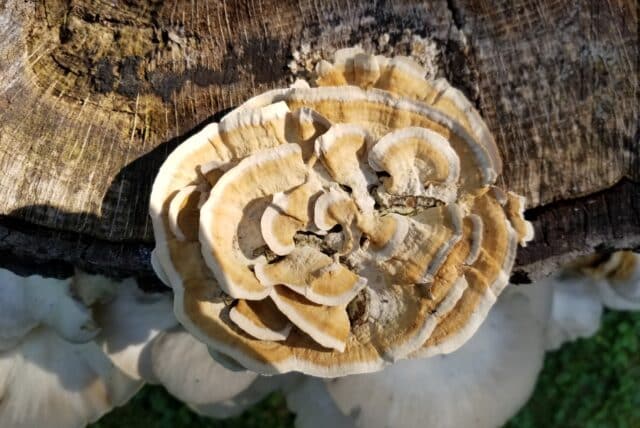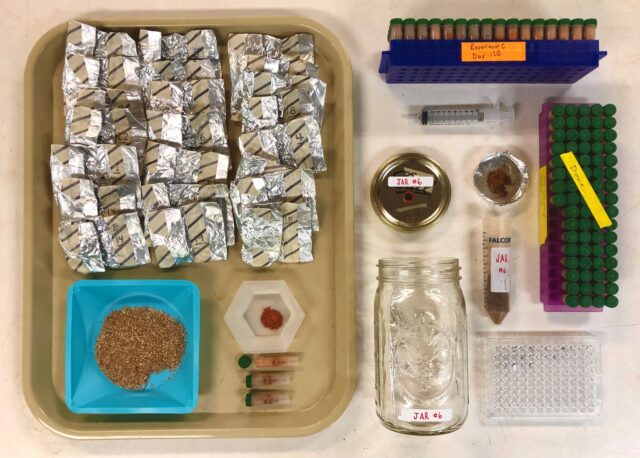
We began our long-term climate research in Stebbins Gulch in 2006. Our goal was to monitor how plants and soil fungi that associate with plant roots (called mycorrhizal fungi) respond to changes in air and soil temperature and moisture. Figure one shows one of our two weather stations in the old-growth beech-maple forest in Stebbins. The beech tree in the background that toppled over in 2015 was more about 219 years old when it fell based on tree ring data – the tree began to grow in 1796.
Since 2007, we have observed large seasonal fluctuations in some wildflower populations such as wild leek. The cause of these fluctuations is still unclear. We have found that over 5 years soil fungal communities responded strongly to soil moisture but were unaffected by soil temperature. This suggests that soil fungi will respond more to changes in rain and snow fall than temperature as the climate warms.
We began our work in 2006 and this large, old beech collapsed after a high wind event in April 2007. The process of tree death is closely linked to growth and recruitment within forests. The collapse and death of this tree created a light gap that other, younger plants can grow into and fill. The plants that replace this beech tree may be of another species, such as oak or tulip poplar. This process of gap creation and tree replacement means our forest are always changing and evolving.
After 13 years the tree that fell in Stebbins is still visible, but it has decayed considerably. The fallen tree has been home to fungi that have begun the process of wood decay and in turn have become food for myriad insects. Those insects support other animal life, such as woodpeckers and small mammals. The nutrients within the wood are also released as a part of this decay process and return to the soil to fuel future plant and tree growth.

David J. Burke, PhD
Vice President for Science and Conservation
Dr. David Burke is the Vice President for Science and Conservation at Holden Forests & Gardens, and the principal investigator of Holden’s soil ecology lab. Dr. Burke is a leader in the study of beech leaf disease, a new forest pathogen sweeping across North America from its epicenter in northeastern Ohio. His work has helped identify the means of the disease’s spread, and his continuing work aims to reveal the mechanisms of the disease as well as a path to breeding trees resistant to the trees. Although he’s recently served as a forest pathologist out of need, Dr. Burke is a soil ecologist at heart, primarily interested in the interactions between plants and the microorganisms that live in the soil like the mycorrhizal fungi that form mutually beneficial relationships with plants. These mycorrhizal fungi may be key to the health of many natural communities, so a better understanding of their diversity, how they interact with plants and other soil microbes, and how this in turn affects ecosystem health is necessary for the future sound management of natural systems.
